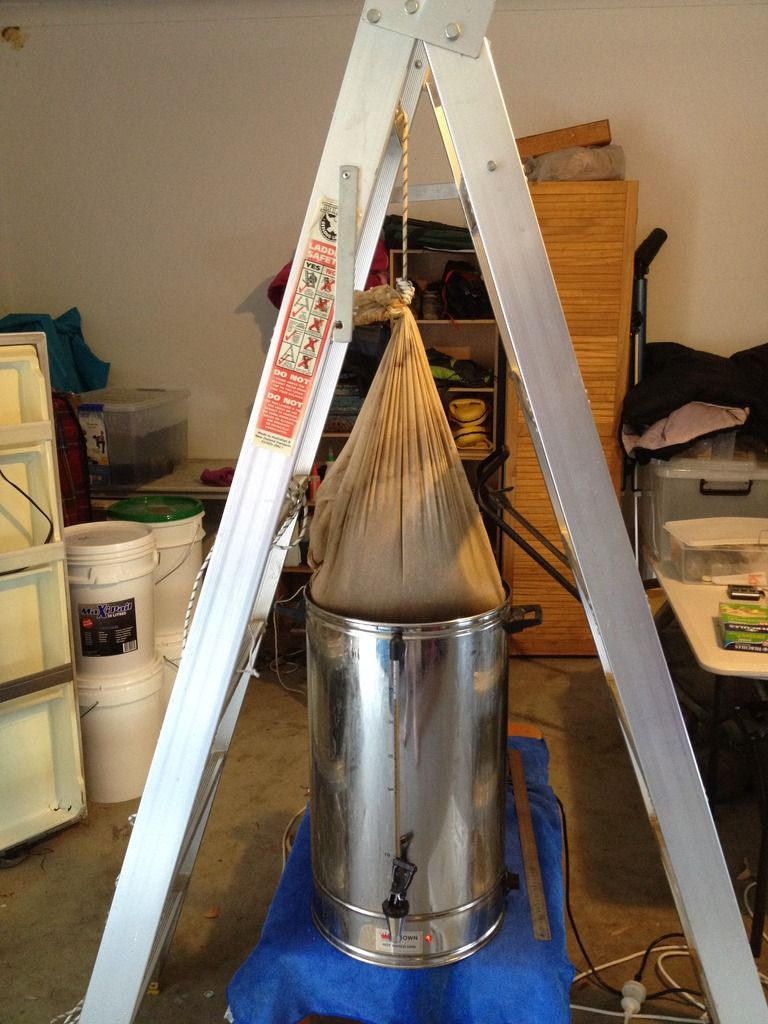trustyrusty
Well-Known Member
- Joined
- 25/1/11
- Messages
- 955
- Reaction score
- 60
Hi I am thinking about BIAB, I have watched 3 videos, and all three different.
One guy took the bag out into a 2nd bucket in hot water (whatever the temp was) to 'sparge' the bag and use that water as part of volume.
The other held the bag over the boiler and drained hot water over, and the third did not do anything but drain the bag...
I think if I watched a fourth it would be different too... How do most people do it.... I would assume getting all the extra sugars from the bag would be the best, but you would not want to dilute too much?
Thanks
One guy took the bag out into a 2nd bucket in hot water (whatever the temp was) to 'sparge' the bag and use that water as part of volume.
The other held the bag over the boiler and drained hot water over, and the third did not do anything but drain the bag...
I think if I watched a fourth it would be different too... How do most people do it.... I would assume getting all the extra sugars from the bag would be the best, but you would not want to dilute too much?
Thanks





